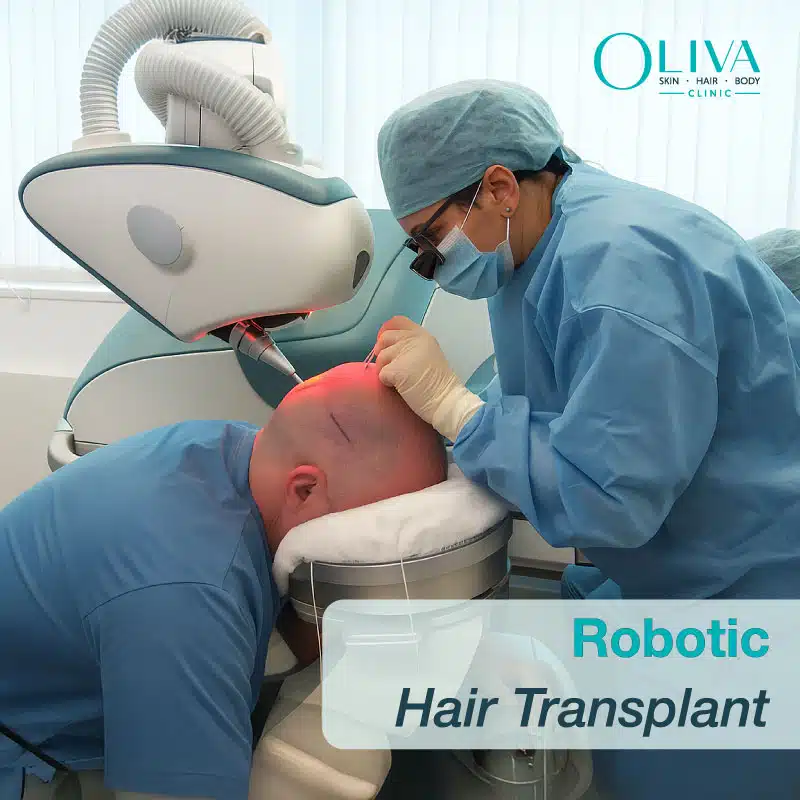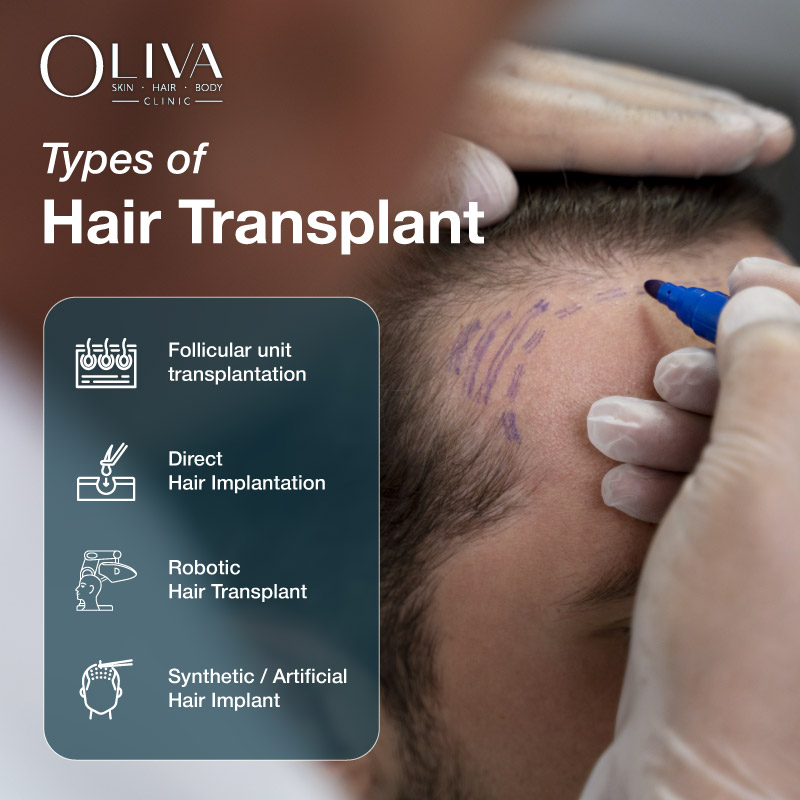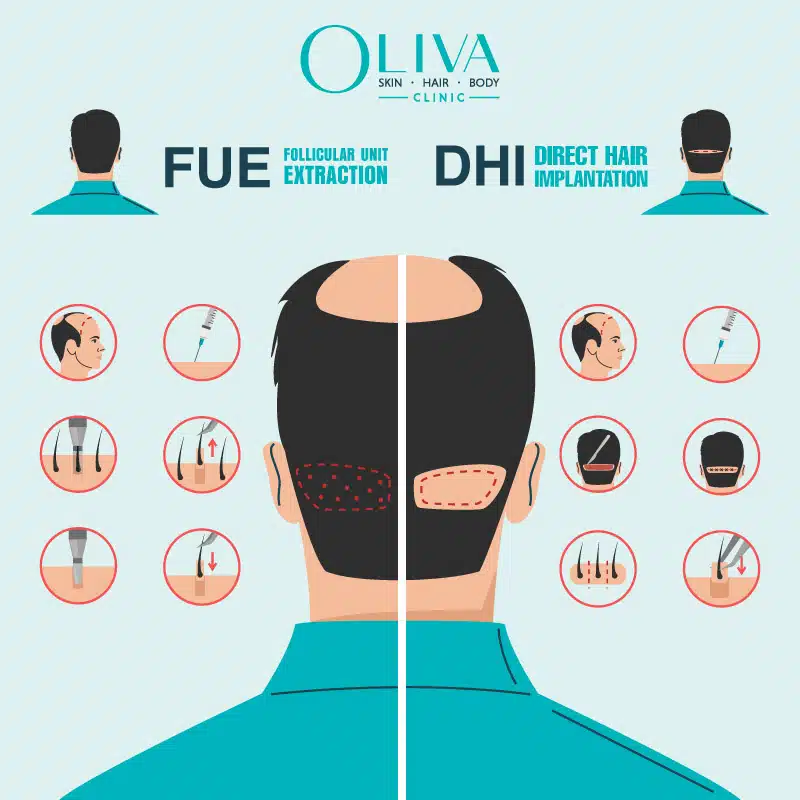In This Article
Robotic Hair Transplant: Cost in India, Benefits, & FUE vs DHI Comparison
The recent advancements in hair restoration treatments have led to the development of the robotic hair transplant technique, a latest innovation in the field. With the increasing popularity of this technique worldwide, it’s important to understand how a robotic transplant works. This blog will cover everything about robotic hair transplant, its benefits, side effects, and cost. We will also compare it with conventional hair transplant methods, such as FUE and DHI.
In This Article

What Is A Robotic Hair Transplant?
Robotic hair transplant is an advanced hair restoration treatment. As the name suggests, it utilises an artificial intelligence-assisted robotic arm to extract hair follicles with precision and accuracy. The digital mapping and algorithms used by the robotic system help reduce the need for manual intervention and minimise human error.
How Does A Robotic Hair Transplant Work?
Robotic hair transplant is a minimally invasive procedure for hair restoration. It utilises a robotic system that scans your donor area and identifies the healthy follicular units for extraction. The robotic system uses high-resolution imaging and algorithms for harvesting. Assisted by the robotic system, the surgeon manually implants the hair follicles using DHI or FUE transplant techniques.
Benefits Of Robotic Hair Transplant
Here are the multiple advantages offered by a robotic hair transplant technique:
-
Precision:
Robotic hair transplants are AI-powered, offering precision and accuracy in follicle extraction.
-
Minimal Human Error:
The robotic system utilises advanced imaging and algorithms to select and extract the healthiest follicles in the donor area. This helps reduce manual error.
-
Speed:
The robotic system enables faster harvesting of grafts, resulting in a quicker procedure compared to other hair transplant techniques.
-
Consistency:
Robotic technology enables uniform and accurate harvesting of grafts, compared to manual efforts.
-
Faster Recovery:
The accuracy of the robotic system in extracting grafts helps minimise damage to surrounding grafts and tissues. Furthermore, this enhances healing and graft survival rates and also reduces recovery time.
-
Natural-Looking Results:
The robotic system provides a natural-looking hairline and enhances the density and alignment of transplanted hair.
How Much Does A Robotic Hair Transplant Cost In India?
The cost of a robotic hair transplant in India starts at INR 90,000 and may range up to INR 4,00,000. The overall pricing of the treatment is dependent on several factors. These include:
- Graft rate (ranges from Rs 60 to Rs 120 per graft)
- Number of grafts required
- Degree of baldness and hair loss
- Advanced Technology
- Equipment
- Expertise of the dermatologist
- Clinic’s location and reputation
What Are The Risks And Side Effects Of Robotic Hair Transplant?
Although robotic hair transplant has great benefits over other hair transplant methods like FUE and DHI, it does come with a set of limitations. Here is a breakdown of the risks associated with robotic hair transplant treatment:
-
Limited Customisation:
Unlike manual hair transplant techniques, a robotic hair transplant procedure offers fewer customisation options to the clients. It follows pre-programmed patterns, which minimise the personalisation a dermatologist brings.
-
High Cost:
Robotic procedures are usually more expensive than traditional hair transplant techniques due to the technology involved.
-
Accessibility:
As a relatively advanced technique, robotic hair transplant is not yet available in all clinics in India. It is available in only a few clinics.
-
Dependence on Machine Calibration:
The effectiveness of the treatment depends on the accuracy of the machine calibration. The system should be adjusted to suit the individual’s hair type, angle, and direction.
-
Side Effects:
The robotic hair transplant has side effects similar to other hair transplant methods. These include temporary swelling, redness, scabbing, numbness, or mild pain at the donor and recipient sites.
-
Overharvesting:
Another disadvantage of the robotic hair transplant procedure is the risk of extracting too many follicles. As an automated extraction process, it should be closely monitored. Otherwise, it may result in overharvesting.
Robotic Hair Transplant vs FUE vs DHI
Here is a tabular comparison of robotic hair transplant, FUE and DHI techniques. This information will help you gain a better understanding of how these hair transplant techniques work and enable you to make an informed decision.
| Feature | Robotic Hair Transplant | FUE (Follicular Unit Extraction) | Direct Hair Implantation (DHI) |
| Technology Used | AI-powered robotic arm for automated follicle extraction and implantation | Dermatologists manually extract and transplant the follicular units | Dermatologists use a specialised implanter pen to extract and implant grafts |
| Precision | High precision with limited customisation for hairline | High precision with dermatologist-led control | Maximum control by dermatologists over angle, depth and direction |
| Procedure | Minimally invasive | Minimally invasive | Minimally invasive |
| Pain | Virtually painless | Virtually painless | Pain free |
| Availability in India | Rarely available | Widely practised hair transplant technique | Widely practised and most preferred hair transplant technique |
| Downtime | Moderate | Minimal | Minimal |
| Results | Natural-looking results that are dependent on the robotic calibration | Natural hairline and dense hair | Natural hairline, dense hair and high-quality results |
| Cost | Expensive than FUE and FUT | Cost-effective | Very expensive |
Takeaway
Robotic hair transplant is a minimally invasive hair transplant technique recognised for its advanced technology, precision, and accuracy. It is a quick procedure that uses an AI-powered robotic arm for graft harvesting. It offers precision and accuracy during extraction, minimising human error. However, it has limited accessibility across clinics in India compared to FUE and DHI.
Frequently Asked Questions On Robotic Hair Transplant
A robotic hair transplant is ideal for both men and women experiencing patterned baldness or hair thinning, provided they have good donor hair.
Dermatologists do not recommend a hair transplant for individuals with insufficient donor hair, uncontrolled medical conditions, or unrealistic expectations.
Yes, results are generally permanent as transplanted hair is extracted from DHT-resistant donor areas.
Yes. A robotic hair transplant can help you achieve a natural-looking hairline and density when performed correctly, resulting in a natural appearance.
A robotic hair transplant involves moderate downtime. Most people recover within 5–7 days after the procedure and can resume their normal activities quickly.
No, there will not be any scarring. However, you can expect tiny dot scars, which are usually invisible to the naked eye.
Usually yes. However, in some cases, you may only need partial shaving, depending on the technique and the number of grafts required.
The procedure is almost pain-free, as it is done under local anaesthesia. You can expect minimal discomfort.
Read This Next

Types of Hair Transplant Techniques | FUE, DHI, FUT Explained

Hair Transplant Cost In India – Price Starts At INR 35,000

DHI vs FUE: Which Hair Transplant Is Better?

Is Hair Transplant Painful? Know The Truth About Discomfort & Recovery

Best Hair Transplant in Alwarpet, Chennai | Safe, Effective & Surgeon-Led Procedure



